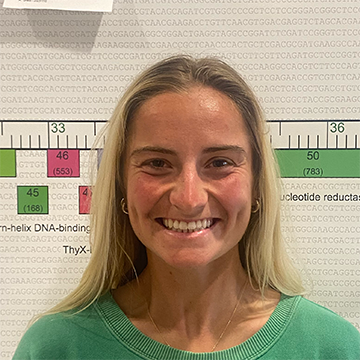Below is a summary of the abstract you submitted. Presenting author(s) is shown in bold.
If any changes need to be made, you can modify the abstract or change the authors.
You can also download a .docx version of this abstract.
If there are any problems, please email Dan at dar78@pitt.edu and he'll take care of them!
This abstract was last modified on March 15, 2024 at 1:30 p.m..

EmyBug is a temperate mycobacteriophage found in Myrtle Beach, South Carolina during the fall of 2023. It was isolated using an enriched method on Mycobacterium smegmatis and subsequently purified and amplified to high titer lysate. During its isolation we noticed the formation of mesas, which is indicative of a lysogenic lifecycle. We verified EmyBug as a temperate phage by obtaining stable lysogens, which showed homotypic immunity. Emybug was sequenced and the genome is 52,948 base pairs long and was assigned to subcluster A9. Other phages within this cluster are temperate and infect Mycobacterium smegmatis. Draft annotation using Glimmer, GeneMark, and Aragon resulted in 91 predicted protein coding genes and one tRNA. Many of these genes were similar to other members of subcluster A9, such as Fayely and PackMan. Manual inspection of the genome identified regions without gene calls that required further investigation. Analysis of coding potential and identification of homologous genes was used as the foundation for additional EmyBug gene assignment. Phamerator allowed comparison of EmyBug with other A9 genomes and allowed for initial functional assignment of many genes. HHPRED provided further verification of these functional calls. Our analysis failed to identify an integrase gene, but EmyBug does encode both Par A and Par B DNA partitioning proteins, which are likely involved in maintenance of lysogeny.








